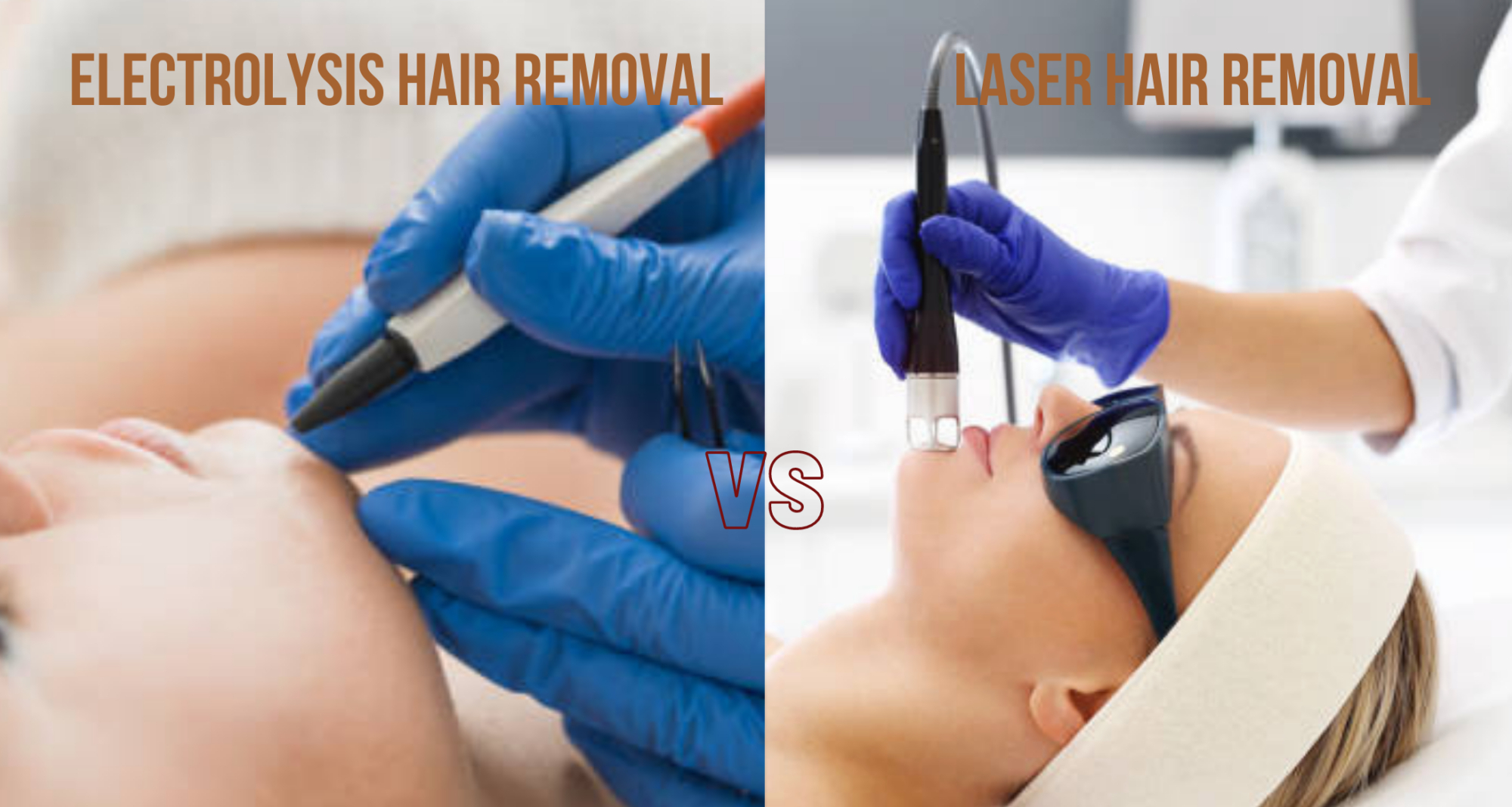

FAQs
How Long Between Laser Hair Removal Sessions
Modified: September 23, 2023
Find answers to general questions about laser hair removal, including the ideal time between sessions. Discover the optimal timing for achieving long-lasting results.
(Many of the links in this article redirect to a specific reviewed product. Your purchase of these products through affiliate links helps to generate commission for Under-tec.com, at no extra cost. Learn more)
Table of Contents
- Introduction
- Understanding Laser Hair Removal
- Factors Affecting Session Intervals
- Recommended Time Gap Between Laser Hair Removal Sessions
- Assessing Hair Growth Cycle for Optimal Results
- Importance of Proper Interval Timing
- Adjusting Session Intervals for Different Body Areas
- Consulting with a Professional for Personalized Recommendations
- Conclusion
Introduction
Laser hair removal is a popular and effective method for achieving long-lasting hair reduction. Whether you want to eliminate unwanted hair on your legs, underarms, bikini area, or any other part of your body, laser hair removal offers a convenient and efficient solution. However, it’s important to understand that achieving the desired results requires multiple sessions over a period of time.
So, how long should you wait between laser hair removal sessions? The answer depends on various factors, including your individual hair growth cycle, the treatment area, and the type of laser technology used. Understanding these factors and following the recommended time gap between sessions can help you achieve optimal results.
In this article, we will explore the factors that affect the interval between laser hair removal sessions and provide recommendations for the ideal time gap. We will also discuss the importance of proper timing in achieving the best outcomes and offer advice on consulting with a professional for personalized recommendations.
Understanding Laser Hair Removal
Laser hair removal is a cosmetic procedure that uses intense pulsating beams of light to target and destroy hair follicles. The laser emits a concentrated beam of light that is absorbed by the pigment (melanin) in the hair follicles, which then converts the light into heat. This heat damages the follicles, inhibiting future hair growth.
Unlike other hair removal methods such as shaving or waxing, laser hair removal provides long-lasting results. It effectively reduces the amount of unwanted hair and can even lead to permanent hair reduction over time. The procedure is safe and suitable for both men and women, and it can be performed on various body parts, including the face, arms, legs, underarms, bikini area, and back.
It’s important to note that laser hair removal is not a one-time solution. Hair grows in cycles, and not all hairs are in the active growth phase at the same time. This is why multiple sessions are necessary to target hair follicles in different growth stages.
The number of sessions required varies based on individual factors such as hair density, hair color, and skin tone. On average, most people need between 6 to 8 sessions spaced out over several weeks or months to achieve significant and long-lasting hair reduction.
During a laser hair removal session, a qualified technician or dermatologist will use a handheld device to deliver the laser pulses to the treatment area. The duration of each session depends on the size of the area being treated. Smaller areas like the upper lip or underarms may take only a few minutes, while larger areas like the legs or back may require more time.
It’s important to select a reputable and experienced professional for laser hair removal. They will assess your skin type, hair color, and medical history to determine the most suitable treatment plan for you. They will also provide you with detailed instructions and recommendations on how long to wait between sessions for the best results.
Factors Affecting Session Intervals
The time gap between laser hair removal sessions can vary depending on several factors. Understanding these factors can help you determine the optimal interval for your specific situation. Here are some key factors that affect the session intervals:
- Hair Growth Cycle: Hair goes through different phases of growth, including the anagen (active growth), catagen (transition), and telogen (resting) phases. Laser hair removal is most effective during the anagen phase when the hair follicles have a higher concentration of melanin. The exact duration of each phase can vary from person to person and body area to body area. Generally, the interval between sessions is set to target hair follicles in the anagen phase.
- Hair Color and Thickness: The laser targets the pigment (melanin) in the hair follicles to destroy them. Darker hairs with higher melanin absorption tend to respond better to laser treatment. Lighter hair colors, such as gray, white, or red, may have limited results as they contain less melanin. Additionally, thicker and coarser hairs may require more sessions compared to finer hairs.
- Skin Tone: The contrast between the color of your hair and the color of your skin plays a role in determining the interval between sessions. Laser hair removal is generally more effective and safer for individuals with lighter skin and darker hair. People with darker skin tones may require longer intervals to minimize the risk of skin damage and pigmentation issues.
- Treatment Area: The body area being treated also affects the session intervals. Some areas, such as the face or underarms, tend to have faster hair growth cycles and may require more frequent sessions. On the other hand, areas like the legs or back may have slower hair growth cycles and longer intervals between sessions.
Based on these factors, a trained professional will assess your unique characteristics and provide personalized recommendations for session intervals. It’s important to follow their guidance to ensure the safety and effectiveness of your laser hair removal treatment.
Recommended Time Gap Between Laser Hair Removal Sessions
The recommended time gap between laser hair removal sessions is typically 4 to 6 weeks. This time frame allows for the hair to go through a complete growth cycle and ensures that the laser treatment targets hair follicles in the active growth phase.
During the initial consultation, your laser hair removal technician will evaluate your hair growth pattern, hair density, skin type, and other factors to determine the most suitable interval for your treatment plan. They will consider the specific area being treated and may adjust the recommended time gap accordingly.
Starting with the recommended 4 to 6 week interval ensures that there is sufficient time for the treated hair follicles to fall out naturally, while also allowing new hair follicles to enter the active growth phase. This consistent approach helps maintain the effectiveness of the laser hair removal treatment and ensures that all hair follicles in the targeted area are addressed.
It’s important to note that adhering to the recommended time gap between sessions is crucial for achieving optimal results. Going too long between sessions may result in missed opportunities to target hair follicles in the active growth phase. On the other hand, scheduling sessions too closely together may not allow enough time for the treated hair to shed naturally.
By following the recommended time gap, you allow the laser hair removal treatment to effectively and progressively reduce hair growth over time. Consistency and patience are key when it comes to laser hair removal, as results may not be immediately noticeable. It may take several sessions to achieve the desired outcome, with gradual hair reduction becoming more apparent after each session.
Remember that everyone’s hair growth patterns and response to treatment are unique. Therefore, it’s important to consult with a trained professional who can assess your specific needs and adjust the time gap as necessary. They will monitor your progress throughout the treatment and make recommendations based on your individual response to the laser hair removal sessions.
Assessing Hair Growth Cycle for Optimal Results
Understanding your hair growth cycle is essential for achieving optimal results with laser hair removal. Each hair on your body goes through a cycle that consists of three phases: anagen, catagen, and telogen. To maximize the effectiveness of laser hair removal, it’s important to assess the hair growth cycle and schedule sessions accordingly.
The anagen phase is the active growth stage of the hair follicle. During this phase, the hair is firmly rooted and attached to the blood supply. The laser energy is most effective in targeting and damaging the hair follicle during the anagen phase. This is why it’s crucial to schedule laser hair removal sessions when the majority of the hair in the treatment area is in this phase.
The duration of the anagen phase varies depending on the body area and individual factors such as genetics and hormone levels. On average, the anagen phase can last anywhere from 2 to 6 weeks or even longer. This is why laser hair removal sessions are typically scheduled around 4 to 6 weeks apart, as it allows for the maximum number of hair follicles to be in the anagen phase at the time of treatment.
The catagen phase is a transitional phase where the hair follicle begins to detach from the blood supply. Hair growth slows down during this phase, and the hair becomes less firmly anchored in the follicle. Laser hair removal is considered less effective during the catagen phase, as the hair follicle is not as responsive to the treatment.
The telogen phase is the resting phase of the hair growth cycle. The hair is no longer growing, and it is eventually shed naturally to make way for new hair growth. During this phase, the hair follicle is dormant and not actively producing hair. Laser hair removal is ineffective during the telogen phase since the hair follicle is not actively connected to the blood supply.
By understanding the different phases of hair growth, you can strategically schedule your laser hair removal sessions. Aligning your sessions with the anagen phase ensures that a larger percentage of hair follicles are actively growing and can be effectively targeted by the laser. This approach maximizes the effectiveness of each session, leading to better and longer-lasting results.
Keep in mind that everyone’s hair growth cycle is unique, and the duration of each phase can vary. This is why it’s important to consult with a trained professional who can assess your individual hair growth pattern and recommend the optimal session intervals for your specific needs.
Importance of Proper Interval Timing
Proper interval timing between laser hair removal sessions is crucial for achieving the best possible results. The recommended time gap allows for optimum targeting of hair follicles and ensures that the treatment addresses hair in the active growth phase. Here are some key reasons why proper interval timing is important:
- Targeting Hair in Active Growth Phase: Laser hair removal is most effective when targeting hair follicles in the anagen (active growth) phase. By adhering to the recommended interval between sessions, you increase the likelihood of treating a higher percentage of hair follicles while they are in this phase. This leads to better and longer-lasting results.
- Avoiding Overlapping Treatments: Scheduling sessions too closely together can lead to overlapping treatments, where the laser energy is applied to already treated hair follicles. Overlapping treatments can be inefficient and may not produce the desired effect. Allowing sufficient time between sessions ensures that the treated hair has had time to shed naturally before the next treatment.
- Preventing Under-Treatment: Waiting too long between sessions can result in under-treatment. When hair follicles are not consistently targeted during the active growth phase, the effectiveness of the laser treatment may be compromised. Following the recommended interval timing ensures that each session effectively addresses as many hair follicles as possible, leading to better outcomes.
- Maintaining Treatment Momentum: Proper interval timing helps maintain the momentum of your laser hair removal treatment. By scheduling sessions at the recommended intervals, you are consistently targeting hair follicles at the optimal stage of growth. This consistent approach enhances the overall effectiveness of the treatment, leading to smoother and longer-lasting hair reduction.
- Minimizing Discomfort and Side Effects: Giving yourself enough time between sessions allows your skin to recover and reduces the risk of potential side effects such as skin irritation or pigmentation issues. Proper interval timing helps ensure that your skin remains healthy and less prone to adverse reactions, maximizing both comfort and safety during the treatment process.
Ultimately, following the recommended interval timing between laser hair removal sessions is key to achieving the best results. Consistency and patience are vital, as it may take several sessions for significant hair reduction to be noticeable. Consulting with a qualified professional will provide you with personalized recommendations based on your specific needs and ensure that you are on track to achieving your desired results.
Adjusting Session Intervals for Different Body Areas
When it comes to laser hair removal, different body areas may require slightly adjusted session intervals. This is because hair growth patterns and cycle durations can vary depending on the specific body area. Understanding these differences and making appropriate adjustments to the interval timing can optimize the effectiveness of the treatment. Here are some factors to consider when adjusting session intervals for different body areas:
- Faster Hair Growth Areas: Certain body areas, such as the face, underarms, and bikini area, tend to have faster hair growth cycles compared to other areas like the legs or back. This means that sessions for these areas may need to be scheduled at slightly shorter intervals, typically around 4 to 5 weeks apart. This ensures that the laser treatment effectively targets hair follicles in the active growth phase.
- Slower Hair Growth Areas: On the other hand, body areas with slower hair growth cycles may require longer intervals between sessions. The legs, back, and chest are examples of areas that typically have slower hair growth. In these cases, sessions may be spaced out to around 6 to 8 weeks apart. The longer interval allows time for hairs in the treated area to shed naturally and for new hairs to enter the active growth phase.
- Skin Sensitivity: Adjusting session intervals is also important considering the sensitivity of the skin in different body areas. For example, facial skin may be more sensitive compared to the skin on the lower legs. Scheduling sessions at appropriate intervals allows for adequate recovery time between treatments, reducing the risk of skin irritation or discomfort.
- Hormonal Influences: Hormonal factors can also impact hair growth in different areas of the body. Areas affected by hormonal fluctuations, such as the upper lip or chin in women, may require closer session intervals to address regrowth effectively. Hormonal changes during pregnancy or menopause can also impact hair growth, and adjustments to session intervals may be necessary to account for these changes.
It’s important to consult with a trained professional who can assess your individual needs and suggest the most suitable session intervals for each body area. They will take into consideration factors such as hair growth patterns, skin sensitivity, and hormonal influences to tailor your treatment plan accordingly.
By adjusting session intervals based on the specific body area, you can ensure that each treatment is optimized for the most effective and long-lasting results. Adhering to these adjusted intervals helps target hair follicles at the optimal stage of growth, leading to smoother, hair-free skin in all desired areas.
Consulting with a Professional for Personalized Recommendations
When it comes to laser hair removal, consulting with a qualified professional is essential for personalized recommendations tailored to your specific needs. While general guidelines exist for session intervals and adjusting them for different body areas, a professional can assess your unique characteristics to create a customized treatment plan. Here’s why consulting with a professional is important:
- Assessment of Individual Factors: A professional technician or dermatologist will assess various factors, including your skin type, hair color, hair density, and medical history. These factors can impact the effectiveness and safety of laser hair removal. By considering these factors, the professional can determine the most suitable session intervals for you.
- Understanding Hair Growth Patterns: Professionals who specialize in laser hair removal have extensive knowledge and experience in understanding hair growth patterns and cycles. They can accurately assess the growth cycle of the specific body area you want to target and recommend the optimal session intervals. This ensures that the laser treatment targets hair follicles in the active growth phase, maximizing the effectiveness of each session.
- Tailored Treatment Plans: A professional will create a personalized treatment plan based on your individual goals, skin characteristics, and hair growth patterns. They will take into account factors such as hair color, skin tone, and any pre-existing skin conditions to develop a plan that is safe and effective for you. They will also provide specific instructions on the recommended session intervals based on your unique needs.
- Monitoring Progress and Adjusting: Throughout your laser hair removal journey, a professional will monitor your progress and adjust session intervals as needed. They will assess how your hair responds to the treatment and make any necessary modifications to ensure the best possible outcomes. Regular check-ins and follow-up appointments with a professional will help track your progress and make any necessary adjustments along the way.
- Ensuring Safety and Minimizing Side Effects: Laser hair removal is a medical procedure, and seeking professional guidance is crucial to ensure your safety. Professionals are trained to operate the laser equipment correctly and safely, reducing the risk of potential side effects such as burns or skin pigmentation issues. They will also provide guidelines on post-treatment care to minimize any discomfort or complications.
Consulting with a professional for personalized recommendations is essential for a successful laser hair removal journey. They have the expertise, knowledge, and experience to create a tailored treatment plan that considers your unique characteristics and goals. By entrusting your laser hair removal treatment to a professional, you can have confidence in achieving optimal results and enjoying the benefits of long-lasting hair reduction.
Conclusion
Laser hair removal is a highly effective method for achieving long-lasting hair reduction, but it requires multiple sessions over a period of time. Understanding the factors that affect session intervals and following recommended time gaps between sessions are crucial for optimal results.
Factors such as the hair growth cycle, hair color and thickness, skin tone, and treatment area all influence the interval timing between laser hair removal sessions. By adjusting session intervals for different body areas and consulting with a professional, you can ensure that the treatment is tailored to your individual needs and targets hair follicles at the optimal stage of growth. This maximizes the effectiveness of each session and leads to smoother, hair-free skin.
Proper interval timing is essential for avoiding under-treatment or overlapping treatments, maintaining treatment momentum, minimizing discomfort and side effects, and optimizing long-term results. Following the recommendations of a trained professional, adhering to the recommended time gap, and maintaining consistency throughout your laser hair removal journey are key to achieving the desired outcome.
Remember, each person’s hair growth patterns and response to treatment are unique, so it is important to consult with a professional who can assess your specific needs and provide personalized recommendations. By doing so, you can confidently embark on your laser hair removal journey and enjoy the benefits of smoother, hair-free skin.







